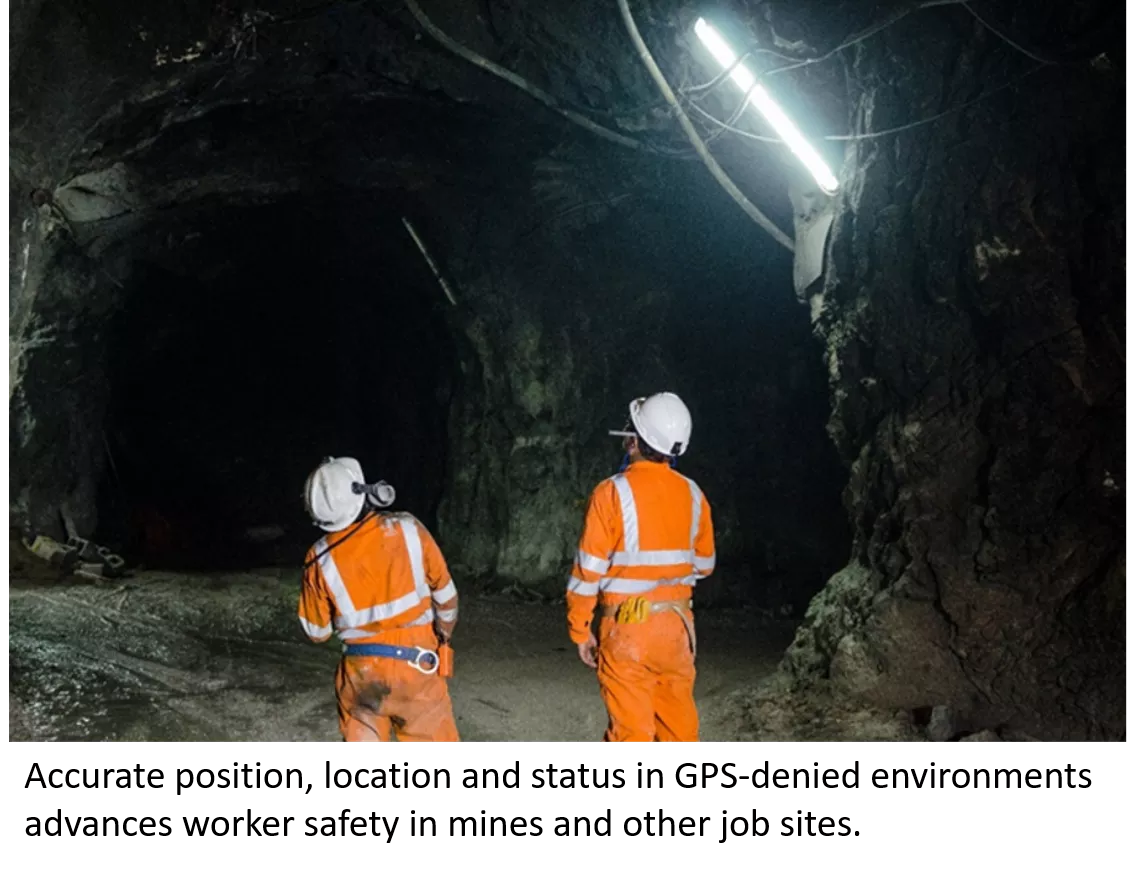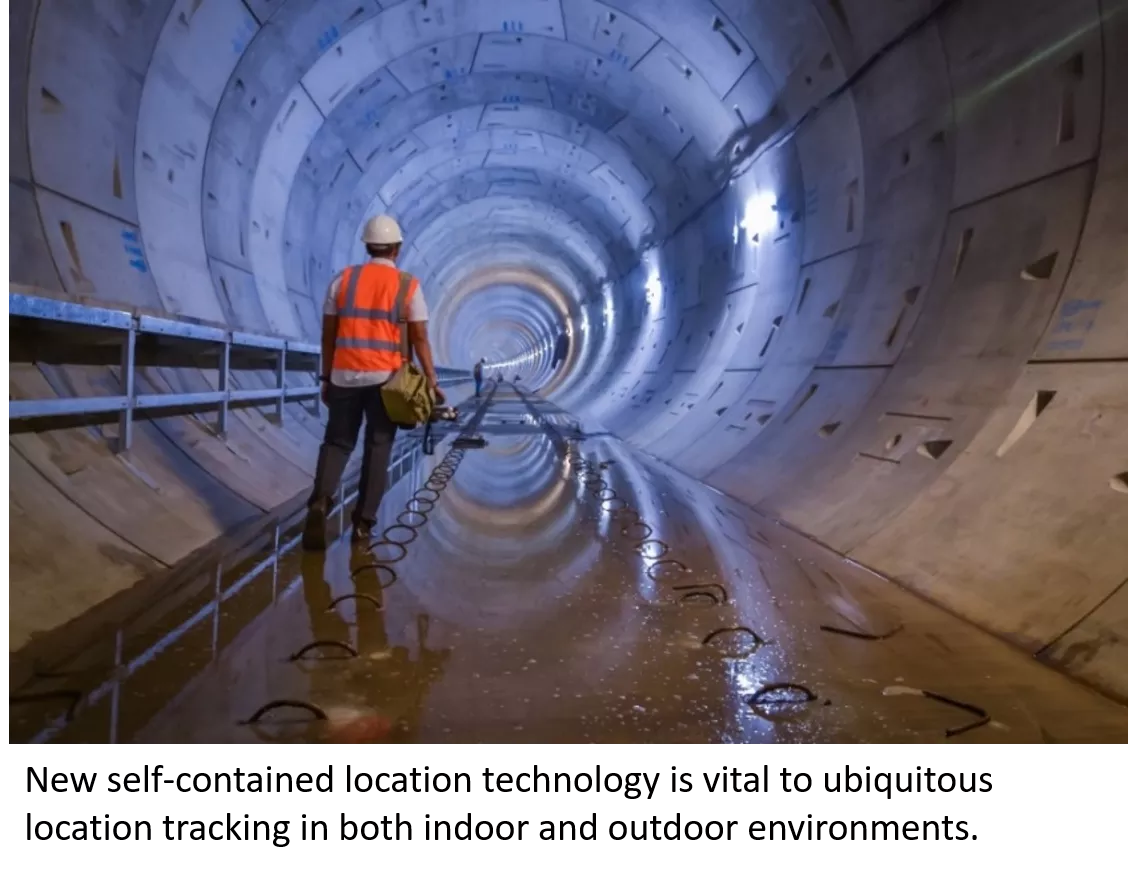
PNI Sensor, a member of the SEMI-MSIG Positioning, Navigation and Timing (PNT) Technical Advisory Council, is developing advanced tracking systems that promise to increase industrial worker safety.
The availability of low-cost GPS jamming and spoofing technologies renders GPS-only solutions for location and navigation an increasingly dangerous and ineffective choice for the dismounted soldier in a battlefield environment. This threat to armed forces has spurred development of new self-contained location and navigation technologies for defense applications — an innovation that offers significant advantages for commercial applications.
 Though not as complex and mission-critical as in defense, self-contained location technology is also essential in commercially available industrial applications. That’s particularly true for workers in industrial sectors such as utilities, mining, and construction, and in environments with lone or remote workers, such as first responders. While jamming and spoofing are not a threat in the industrial sector, determining the precise location of workers in GPS-denied environments is fundamental to ensuring their safety. This makes it a priority to adapt any self-contained, non-infrastructure-based location technology — which was first developed for the modern dismounted soldier — to industrial applications.
Though not as complex and mission-critical as in defense, self-contained location technology is also essential in commercially available industrial applications. That’s particularly true for workers in industrial sectors such as utilities, mining, and construction, and in environments with lone or remote workers, such as first responders. While jamming and spoofing are not a threat in the industrial sector, determining the precise location of workers in GPS-denied environments is fundamental to ensuring their safety. This makes it a priority to adapt any self-contained, non-infrastructure-based location technology — which was first developed for the modern dismounted soldier — to industrial applications.
Bodies in Motion
 Inertial solutions are very difficult to implement properly, even without the challenges uniquely created by human motion dynamics. On a construction site, for example, workers tend to cover a wide range of disciplines: supervisors, electricians, iron workers and equipment operators, among others. While performing their jobs, construction workers change locations, both indoors and outdoors, and perform dynamic motion such as crawling, ducking and climbing. These are all motions that are very difficult to model using traditional adaptive filtering techniques, which are typically applied in vehicular inertial navigation platforms, such as aircraft, ships and tanks. Even if existing inertial navigation systems could be made size, weight, power and cost (SWaP-C)-compatible to be body-worn, their performance accuracy would still need to satisfy the application’s requirements. To properly determine a worker’s precise location to ensure safety on job sites and in remote locations, we must tackle the combined challenges of SWaP-c and human dynamic motion. That’s the most effective approach for creating a complementary positioning technology that augments GPS or other infrastructure-based location systems.
Inertial solutions are very difficult to implement properly, even without the challenges uniquely created by human motion dynamics. On a construction site, for example, workers tend to cover a wide range of disciplines: supervisors, electricians, iron workers and equipment operators, among others. While performing their jobs, construction workers change locations, both indoors and outdoors, and perform dynamic motion such as crawling, ducking and climbing. These are all motions that are very difficult to model using traditional adaptive filtering techniques, which are typically applied in vehicular inertial navigation platforms, such as aircraft, ships and tanks. Even if existing inertial navigation systems could be made size, weight, power and cost (SWaP-C)-compatible to be body-worn, their performance accuracy would still need to satisfy the application’s requirements. To properly determine a worker’s precise location to ensure safety on job sites and in remote locations, we must tackle the combined challenges of SWaP-c and human dynamic motion. That’s the most effective approach for creating a complementary positioning technology that augments GPS or other infrastructure-based location systems.
To address these challenges, we need to build a high-performance inertial measurement solution using commercially available MEMS inertial sensors. The issues of bias drift error and low sensitivity have traditionally made such sensors practically useless for any meaningful inertial tracking. Fortunately, this is no longer the case. We now have sensors that already conform to the necessary SWaP-C requirements for the application, and have the additional advantage of high dynamic range of measurements without saturation errors, which helps to reduce high-force and rapid movement-induced errors, promoting greater accuracy.
 Thus, a path forward is emerging. The current generation of high-performance MEMS gyros can now inertially track workers’ locations to step-level resolution very well for up to 30 minutes — without significant location errors due to bias or scale errors. That’s an order of magnitude better than previous generations. With the new MEMS gyros, errors typically remain less than 2% of distance travelled over that time period. Strategically applying algorithm improvements with higher levels of magnetic corrections has the potential to bring that accuracy down even lower, to less than 0.5% of distance traveled for durations of one hour or more. What’s more, the improved gyro and accelerometer bias, gain, and signal-to-noise (SNR) performance allows for better magnetic anomaly rejection. This enables finer and more sustained gyro bias corrections in the fused solution, which creates a system greater than the sum of its parts. We believe that these newer systems will promote greater worker safety at a truly affordable price.
Thus, a path forward is emerging. The current generation of high-performance MEMS gyros can now inertially track workers’ locations to step-level resolution very well for up to 30 minutes — without significant location errors due to bias or scale errors. That’s an order of magnitude better than previous generations. With the new MEMS gyros, errors typically remain less than 2% of distance travelled over that time period. Strategically applying algorithm improvements with higher levels of magnetic corrections has the potential to bring that accuracy down even lower, to less than 0.5% of distance traveled for durations of one hour or more. What’s more, the improved gyro and accelerometer bias, gain, and signal-to-noise (SNR) performance allows for better magnetic anomaly rejection. This enables finer and more sustained gyro bias corrections in the fused solution, which creates a system greater than the sum of its parts. We believe that these newer systems will promote greater worker safety at a truly affordable price.
PNI Sensor, a member of the SEMI-MSIG PNT Technical Advisory Council (TAC), is developing a tracking system that combines the best elements of the newest-generation MEMS devices with an electronic compass that uses advanced magnetic anomaly detection and rejection algorithms. Based on PNI’s latest attitude and heading reference system (AHRS), the novel PNT system employs a unique Kalman algorithm that intelligently fuses its reference magnetic sensors with gyros and accelerometers. In conjunction with this work, PNI Sensor has developed advanced pedometry functionality for use in its tracking system for very high dead-reckoning tracking performance used in defense industry applications. PNI is initially designing that system to track dismounted soldiers and special forces operating in GPS-denied or contested environments.
For more information about PNI Sensor’s advanced location and navigation technology, please visit PNI Sensor. To learn more about the SEMI-MSIG PNT TAC, please contact Carmelo Sansone, director, MEMS & Sensors Industry Group.
 George Hsu is a founder and CTO of PNI Sensor. He has focused his career on the sensor industry, having invented several magnetic sensor breakthroughs, including the magneto-inductive technology, the core of today’s electronic compassing in the automotive, consumer, scientific and military markets. Hsu is a graduate of Stanford University School of Engineering, holds several patents, and is a much-published author of technical articles on sensor theory, design and applications. He is an active member of the MEMS & Sensors Industry Group PNT TAC.
George Hsu is a founder and CTO of PNI Sensor. He has focused his career on the sensor industry, having invented several magnetic sensor breakthroughs, including the magneto-inductive technology, the core of today’s electronic compassing in the automotive, consumer, scientific and military markets. Hsu is a graduate of Stanford University School of Engineering, holds several patents, and is a much-published author of technical articles on sensor theory, design and applications. He is an active member of the MEMS & Sensors Industry Group PNT TAC.
About the SEMI-MSIG Positioning, Navigation and Timing Project
MEMS & Sensors Industry Group (MSIG) created a member-based PNT TAC to identify and pursue PNT system innovations for GPS-denied environments. To that end, MSIG solicited proposals from its membership for the SEMI-MSIG PNT Project, a U.S. Army Research Laboratory-funded R&D project. PNT committee members that have secured funding are pursuing R&D platforms that improve accuracy and performance. Platforms may include software, hardware, and advanced packaging requirements of optical and MEMS-based positioning and timing systems.
